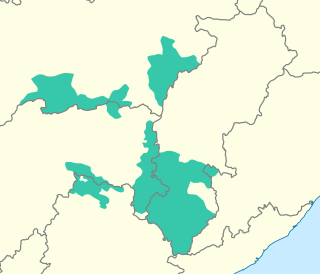| Gondi | |
|---|---|
| गोण्डि, గోణ్డి | |
| Native to | India |
| Region | Gondwana |
| Ethnicity | Gondi |
Native speakers | 2.98 million (2011 census)[1] |
Dravidian
| |
| Telugu script, Devanagari, Odia script, Gunjala script, Masaram script (See Gondi scripts) | |
| Language codes | |
| ISO 639-2 | gon |
| ISO 639-3 | gon – inclusive codeIndividual codes: gno – Northern Gondiesg – Aheri Gondiwsg – Adilabad Gondi |
| Glottolog | nort3258 |
 Areas where Gondi is spoken. Koya not included. | |
 Gondi is classified as Vulnerable by the UNESCO Atlas of the World's Languages in Danger | |
| Person | Gōṇḍ |
|---|---|
| People | Gōṇḍir |
| Language | Gōṇḍī, Kōī, Kōītōr |
| Country | Gōṇḍvana |
Gondi (Gōṇḍī), natively known as Koitur (Kōī, Kōītōr), is a South-Central Dravidian language, spoken by about three million Gondi people,[2] chiefly in the Indian states of Madhya Pradesh, Maharashtra, Chhattisgarh, Andhra Pradesh, Telangana and by small minorities in neighbouring states. Although it is the language of the Gond people, it is highly endangered, with only one fifth of Gonds speaking the language. Gondi has a rich folk literature, examples of which are wedding songs and narrations. Gondi people are ethnically related to the Telugus.
- ^ "Census of India Website : Office of the Registrar General & Census Commissioner, India". www.censusindia.gov.in. Archived from the original on 16 July 2019. Retrieved 5 July 2018.
- ^ Beine, David K. 1994. A Sociolinguistic Survey of the Gondi-speaking Communities of Central India. M.A. thesis. San Diego State University. chpt. 1
